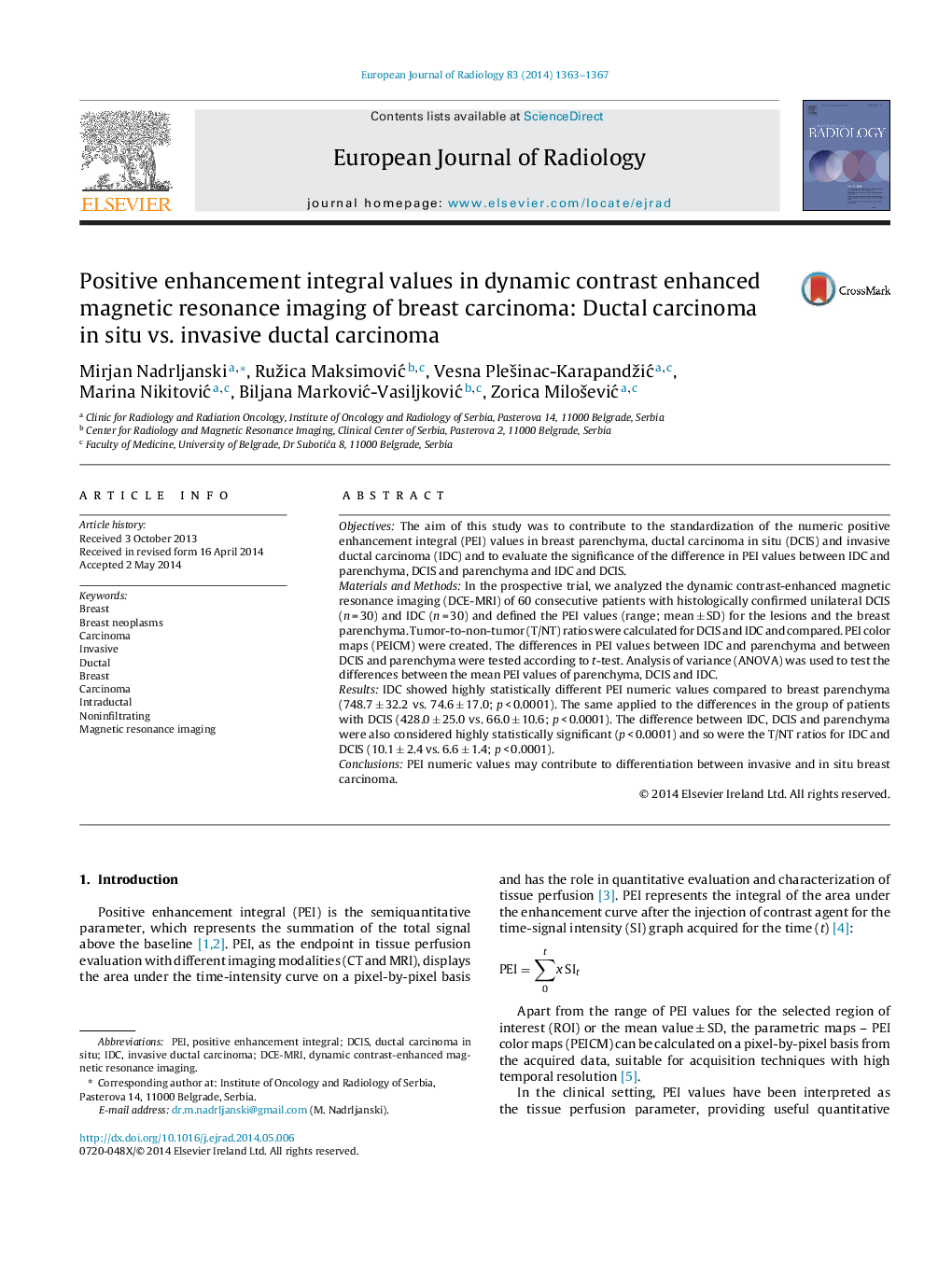| Article ID | Journal | Published Year | Pages | File Type |
|---|---|---|---|---|
| 4225203 | European Journal of Radiology | 2014 | 5 Pages |
ObjectivesThe aim of this study was to contribute to the standardization of the numeric positive enhancement integral (PEI) values in breast parenchyma, ductal carcinoma in situ (DCIS) and invasive ductal carcinoma (IDC) and to evaluate the significance of the difference in PEI values between IDC and parenchyma, DCIS and parenchyma and IDC and DCIS.Materials and MethodsIn the prospective trial, we analyzed the dynamic contrast-enhanced magnetic resonance imaging (DCE-MRI) of 60 consecutive patients with histologically confirmed unilateral DCIS (n = 30) and IDC (n = 30) and defined the PEI values (range; mean ± SD) for the lesions and the breast parenchyma. Tumor-to-non-tumor (T/NT) ratios were calculated for DCIS and IDC and compared. PEI color maps (PEICM) were created. The differences in PEI values between IDC and parenchyma and between DCIS and parenchyma were tested according to t-test. Analysis of variance (ANOVA) was used to test the differences between the mean PEI values of parenchyma, DCIS and IDC.ResultsIDC showed highly statistically different PEI numeric values compared to breast parenchyma (748.7 ± 32.2 vs. 74.6 ± 17.0; p < 0.0001). The same applied to the differences in the group of patients with DCIS (428.0 ± 25.0 vs. 66.0 ± 10.6; p < 0.0001). The difference between IDC, DCIS and parenchyma were also considered highly statistically significant (p < 0.0001) and so were the T/NT ratios for IDC and DCIS (10.1 ± 2.4 vs. 6.6 ± 1.4; p < 0.0001).ConclusionsPEI numeric values may contribute to differentiation between invasive and in situ breast carcinoma.
